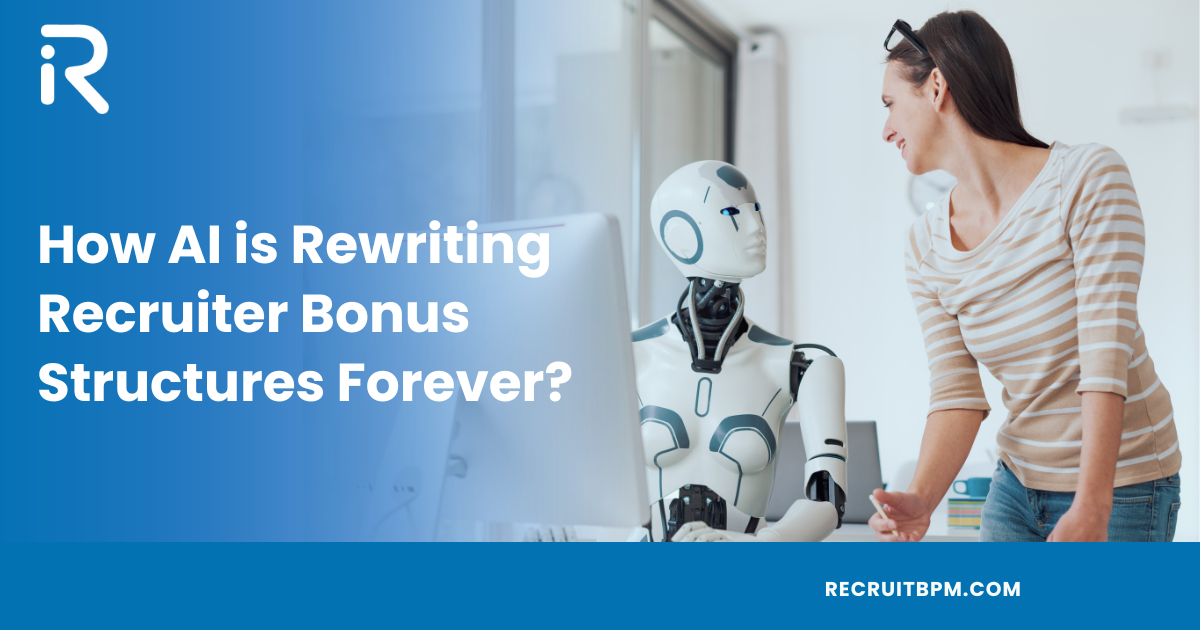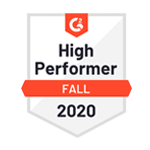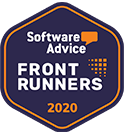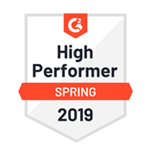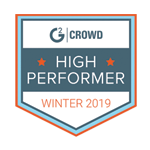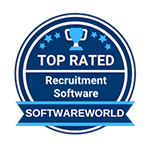The compensation revolution isn’t coming—it’s here. While traditional recruiters struggle with manual processes, AI-powered recruiters are achieving unprecedented results. Companies using advanced recruitment technologies report 40% faster hiring and dramatically improved candidate quality.
But here’s the twist nobody saw coming. AI isn’t replacing recruiters—it’s creating a massive compensation gap between those who embrace technology and those who don’t. 87% of companies now use AI-driven recruitment tools, fundamentally changing how performance gets measured and rewarded.
The recruiters thriving in 2025 aren’t just finding candidates. They’re orchestrating AI-human collaboration, managing data quality, and delivering results that seemed impossible just two years ago. Their bonus structures reflect this new reality.
How AI Shattered Traditional Bonus Models?
Remember when recruiter bonuses were simple math? Fill X positions, get Y bonus. Those days disappeared faster than anyone predicted.
Traditional bonus calculation looked like this: Bonus = (Placements Made ÷ Target Placements) × Base Amount
Today’s AI-enhanced reality operates differently: Bonus = ((AI-Assisted Placements × Efficiency Multiplier) + (Quality Score × Retention Bonus) + (Technology Mastery × Innovation Premium)) ÷ Target
This isn’t just complexity for complexity’s sake. It reflects how AI fundamentally changes recruiter productivity and value creation.
The Productivity Revolution
Companies report that AI-assisted recruiters handle 3-5x more candidates than traditional methods. A single recruiter can now manage pipeline activities that previously required entire teams.
But raw volume isn’t the whole story. AI tools enable quality improvements that traditional metrics never captured. Predictive algorithms identify candidates 67% more likely to succeed long-term.
Smart organizations recognize this shift. They’re redesigning bonus structures to reward both efficiency gains and quality improvements that AI enables.
Market Reality Check
The talent acquisition landscape has fundamentally shifted. AI skills now command an 11% compensation premium across industries. Companies are betting big on recruitment technology, and compensation reflects these investments.
Consider the numbers driving change:
- 78% of companies using AI report a 40% reduction in time-to-hire
- Quality-of-hire improvements average 31% with AI implementation
- Recruiter productivity gains range from 200-400% with proper AI utilization
These aren’t marginal improvements. They’re transformational changes requiring new approaches to performance measurement and compensation.
Understanding Modern Recruiter Bonus Structures
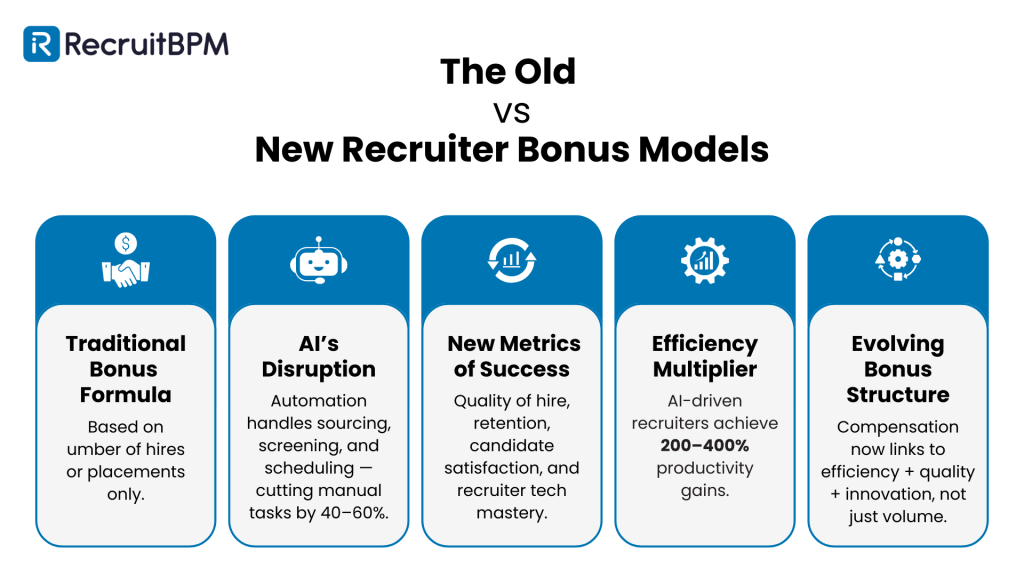
Traditional Foundation Elements
Before exploring AI innovations, let’s establish the baseline. Effective recruiter bonus structures still include fundamental components that motivate performance and align individual success with organizational goals.
Performance-Based Bonuses: These reward recruiters for measurable outcomes like successful placements, candidate retention rates, and hiring manager satisfaction. A software company might offer $1,000 for each placement that stays six months or longer.
Volume-Based Incentives: These focus on activity levels and pipeline management. Recruiters receive bonuses for maintaining specific numbers of active candidates, conducting target interview volumes, or meeting sourcing quotas.
Quality-Focused Rewards: These emphasize long-term placement success and cultural fit accuracy. Bonuses increase when placed candidates receive positive performance reviews or achieve promotion within defined timeframes.
Team Collaboration Bonuses: These encourage knowledge sharing and collective success. Teams receive shared bonuses for meeting departmental goals or maintaining high candidate experience scores.
The AI Enhancement Layer
Modern bonus structures add sophisticated elements that reward technology mastery and data-driven performance improvements.
AI Utilization Bonuses: Companies now track how effectively recruiters use AI tools. Bonuses range from 15-25% for achieving technology adoption targets and demonstrating measurable productivity gains.
Data Quality Incentives: Clean, comprehensive candidate data feeds AI algorithms effectively. Recruiters earn bonuses for maintaining database quality, accurate candidate profiling, and consistent data entry standards.
Innovation and Process Improvement Rewards: Forward-thinking organizations reward recruiters who identify workflow optimizations, suggest tool improvements, or develop creative AI applications that benefit team performance.
AI-Enhanced Performance Metrics Revolution
The metrics that matter most have evolved dramatically. While placement numbers remain important, AI enables measurement of previously invisible performance indicators.
AI-Assisted Placement Velocity: This measures how quickly recruiters fill positions when using AI tools versus manual methods. Top performers show 50-70% improvement in time-to-hire with proper AI utilization.
Quality Score Algorithms: AI systems predict candidate success probability based on multiple data points. Recruiters earn higher bonuses when their placements exceed predicted performance thresholds.
Sourcing Efficiency Ratios: This calculates candidates sourced per hour with AI assistance. Elite recruiters achieve 10-15 qualified candidates per hour using advanced sourcing automation.
Automated Engagement Effectiveness: AI-driven candidate communication tools enable personalized outreach at scale. Bonuses reward response rates, conversion percentages, and relationship-building success.
Technology Mastery Measurements
Companies are implementing sophisticated tracking systems that monitor AI tool proficiency and reward continuous learning.
Platform Utilization Scores: These track how comprehensively recruiters use available AI features. Full utilization often correlates with 200-300% productivity improvements.
Prompt Engineering Excellence: As AI becomes more conversational, the ability to craft effective prompts becomes valuable. Some organizations offer specific bonuses for demonstrated prompt optimization skills.
Integration Success Metrics: Recruiters who effectively connect multiple AI tools and create seamless workflows earn recognition through specialized bonus programs.
Technology Adoption Incentive Structures
Rewarding Innovation Adoption
Smart organizations understand that technology adoption requires intentional incentives. They design bonus structures that encourage experimentation and reward successful implementation.
Learning and Development Bonuses: Companies offer bonuses for completing AI training programs, earning technology certifications, or demonstrating proficiency with new recruitment tools.
Early Adopter Rewards: Recruiters who successfully pilot new technologies before organization-wide rollouts often receive premium bonuses recognizing their contribution to competitive advantage.
Knowledge Sharing Incentives: Organizations reward recruiters who train colleagues on AI tools, create process documentation, or contribute to best practice development.
ROI-Based Compensation Models
The most sophisticated bonus structures tie individual compensation to measurable return on investment from AI tool usage.
Cost Savings Sharing: When AI tools reduce cost-per-hire, successful recruiters receive percentage-based bonuses from realized savings. This aligns individual success with organizational financial performance.
Productivity Gain Participation: Recruiters who demonstrate significant productivity improvements through AI utilization earn bonuses calculated from increased placement revenue or reduced hiring timeframes.
Quality Improvement Rewards: Long-term bonuses reward recruiters whose AI-assisted placements show superior retention rates, performance scores, or advancement trajectories.
Market-Responsive Compensation Models
Dynamic Bonus Adjustments
Traditional annual bonus structures can’t keep pace with rapidly changing market conditions. AI-enabled organizations implement dynamic adjustment mechanisms.
Real-Time Market Data Integration: Compensation algorithms now incorporate live market data about talent scarcity, competitive salary levels, and industry demand fluctuations.
Competitive Positioning Strategies: AI tools monitor competitor hiring activities and adjust bonus structures to maintain talent acquisition advantages in key skill areas.
Geographic Arbitrage Considerations: Remote work capabilities enable global talent access. Bonus structures account for cost-of-living differences and local market competitiveness.
Skills Premium Structures
The market now pays dramatically different rates for different capabilities. Modern bonus structures reflect these skill-based value differences.
AI Proficiency Premiums: Recruiters demonstrating advanced AI tool mastery earn 15-20% bonus premiums over baseline performance levels.
Cross-Functional Capability Bonuses: Recruiters who successfully handle multiple role types or industry specializations earn complexity bonuses reflecting their broader value contribution.
Data Analytics Expertise Rewards: The ability to interpret recruitment analytics and generate actionable insights commands premium compensation in today’s market.
Quality-Focused Bonus Evolution
Beyond Placement Numbers
The AI era enables sophisticated quality measurement that transforms how success gets defined and rewarded.
Predictive Success Accuracy: AI systems predict candidate success probability. Recruiters earn higher bonuses when their placements consistently exceed prediction models.
Cultural Fit Assessment Precision: Advanced assessment tools measure cultural alignment. Bonuses reward recruiters whose placements demonstrate strong cultural integration over time.
Long-Term Value Creation: Progressive organizations track placed candidates’ career progression and tie recruiter bonuses to long-term success outcomes.
Hiring Manager Satisfaction Enhancement
AI tools enable better matching, but human relationship management remains crucial. Bonus structures reflect this balance.
Stakeholder Relationship Scores: Regular feedback collection measures hiring manager satisfaction with recruiter performance, candidate quality, and process efficiency.
Repeat Business Generation: Bonuses reward recruiters whose excellent service generates repeat hiring requests and positive referrals within client organizations.
Process Improvement Contributions: Recruiters who identify and implement improvements that enhance hiring manager experience earn recognition through specialized bonus programs.
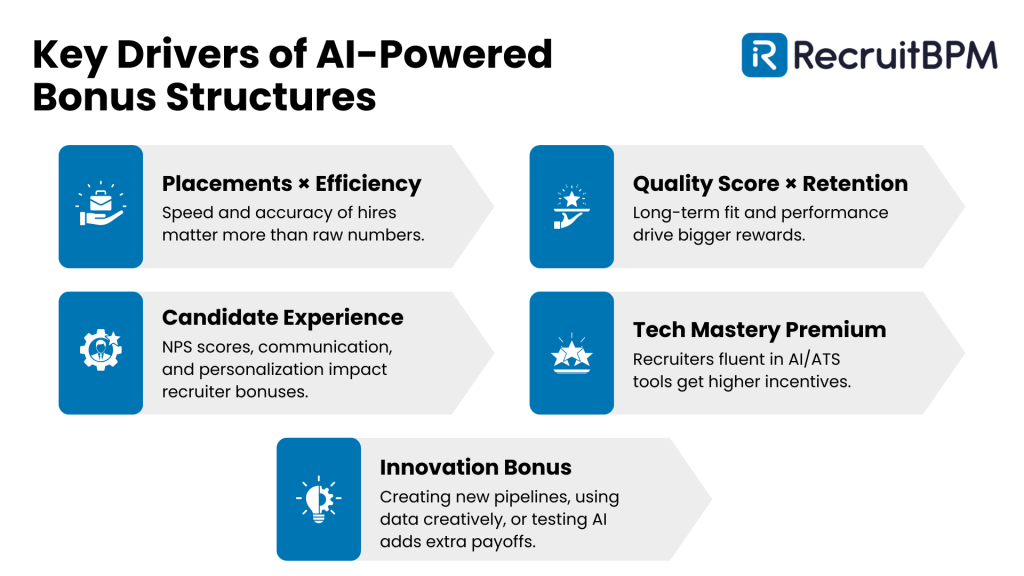
Skills Premium Compensation Architecture
The New Talent Hierarchy
Market forces have created clear skill-based compensation tiers. Understanding these tiers helps organizations design competitive bonus structures.
Tier 1: AI-Native Recruiters: These professionals seamlessly integrate AI tools into every workflow stage. They command 20-30% premium compensation and maximum bonus eligibility.
Tier 2: AI-Assisted Recruiters: These professionals effectively use AI tools for specific tasks while maintaining traditional approaches in other areas. They earn standard bonus rates with technology adoption incentives.
Tier 3: Traditional Recruiters: These professionals rely primarily on manual processes. Their bonus potential decreases as market demands shift toward technology-enhanced performance.
Specialized Capability Bonuses
Modern recruitment requires diverse skill combinations. Bonus structures reward versatility and specialization equally.
Industry Expertise Premiums: Deep knowledge in high-demand sectors like AI, healthcare, or cybersecurity commands bonus premiums of 10-15%.
Technical Assessment Capabilities: Recruiters who can effectively evaluate technical candidates through AI-assisted assessment tools earn specialized bonuses.
Global Talent Access Skills: The ability to source and manage candidates across multiple countries and time zones has become increasingly valuable.
Remote Work Compensation Considerations
Geographic Arbitrage Strategies
Remote work enables access to global talent pools while managing cost structures effectively.
Location-Based Adjustments: Sophisticated bonus structures account for local cost-of-living differences while maintaining internal equity and competitive positioning.
Global Talent Pool Bonuses: Recruiters who successfully source candidates from emerging markets or underutilized geographic regions earn specialized bonuses.
Cross-Cultural Success Rewards: Managing international candidates requires specific skills. Bonuses reward successful placement and retention across cultural boundaries.
Remote Productivity Metrics
Measuring performance in distributed teams requires new approaches and adjusted expectations.
Output-Based Measurement: Focus shifts from activity tracking to results delivery. Bonuses reward placement success regardless of working hours or location.
Collaboration Effectiveness: Remote recruiters who maintain strong team connections and knowledge-sharing practices earn collaboration bonuses.
Self-Management Excellence: Independent performance management becomes crucial. Bonuses reward recruiters who consistently deliver results without direct supervision.
Implementation Strategies for Modern Bonus Structures
Phase 1: Assessment and Planning
Current State Analysis: Evaluate existing bonus structures against market standards and technology capabilities. Identify gaps between current rewards and desired behaviors.
Technology Readiness Evaluation: Assess available AI tools and integration capabilities. Ensure bonus structures align with actual technology deployment and training programs.
Market Benchmarking: Research competitor compensation strategies and industry standards. Position bonus structures to attract and retain top talent effectively.
Phase 2: Structure Design and Testing
Pilot Program Development: Test new bonus structures with small groups before organization-wide implementation. Collect feedback and refine approaches based on actual results.
Metric Definition and Tracking: Establish clear measurement criteria and tracking systems. Ensure transparency and fairness in bonus calculations and award processes.
Communication and Training: Develop comprehensive communication strategies that explain new bonus structures and provide training on achieving success under updated criteria.
Phase 3: Launch and Optimization
Gradual Rollout Strategy: Implement new structures systematically across teams and regions. Monitor results and adjust approaches based on performance data and feedback.
Continuous Improvement Process: Establish regular review cycles that evaluate bonus structure effectiveness and identify optimization opportunities.
Market Responsiveness Maintenance: Create mechanisms for updating bonus structures as market conditions, technology capabilities, and organizational priorities evolve.
Common Implementation Pitfalls and Solutions
Technology Over Strategy
The Pitfall: Focusing on tools rather than outcomes leads to complex bonus structures that don’t improve performance.
The Solution: Start with clear performance objectives and design technology incentives that support those goals rather than rewarding tool usage for its own sake.
Ignoring Change Management
The Pitfall: New bonus structures fail when teams don’t understand or accept changes to performance measurement and reward systems.
The Solution: Invest heavily in communication, training, and support systems that help recruiters succeed under new performance criteria.
Overlooking Equity Concerns
The Pitfall: AI-enhanced bonus structures can create unfair advantages for recruiters with better access to technology or training.
The Solution: Ensure equal access to AI tools and training opportunities while providing transition support for recruiters adapting to new systems.
Short-Term Focus Problems
The Pitfall: Bonus structures that only reward immediate results miss the long-term value creation that AI enables.
The Solution: Balance short-term placement bonuses with long-term quality and relationship-building rewards.
Measuring Success: KPIs for Modern Bonus Structures
Efficiency Indicators
Time-to-Hire Improvements: Track average hiring timeframes before and after bonus structure implementation. Successful programs show 25-40% improvement.
Cost-per-Hire Optimization: Monitor total hiring costs including technology investments and bonus payments. Effective structures reduce overall cost-per-hire despite higher individual bonuses.
Productivity Enhancement: Measure placements per recruiter over time. AI-enhanced bonus structures typically drive 200-300% productivity gains.
Quality Measurements
Candidate Retention Rates: Track how long placed candidates stay with hiring organizations. Quality-focused bonus structures improve retention by 15-25%.
Performance Score Correlations: Monitor placed candidates’ performance reviews and advancement rates. Effective structures correlate with superior long-term candidate success.
Hiring Manager Satisfaction: Regular stakeholder feedback measures process quality and candidate fit accuracy. Successful bonus structures improve satisfaction scores consistently.
Strategic Impact Assessment
Market Position Strengthening: Evaluate competitive talent acquisition capabilities relative to industry peers. Effective bonus structures enhance competitive advantages.
Technology ROI Achievement: Calculate return on investment from AI tool deployment and bonus structure changes. Successful programs show positive ROI within 12-18 months.
Talent Retention Success: Monitor recruiter turnover and satisfaction under new bonus structures. Effective programs reduce turnover while increasing performance.
Future-Proofing Your Compensation Strategy
Emerging Technology Considerations
Generative AI Integration: Large language models will transform candidate communication and assessment. Bonus structures must evolve to reward effective prompt engineering and AI collaboration.
Predictive Analytics Advancement: Improved prediction capabilities will enable more sophisticated quality bonuses based on long-term candidate success forecasting.
Automation Expansion: As routine tasks become fully automated, bonus structures will shift toward rewarding strategic thinking, relationship building, and complex problem-solving.
Market Evolution Adaptation
Skills Shortage Intensification: Competition for specialized talent will continue increasing. Bonus structures must remain flexible enough to respond to market demand fluctuations.
Global Talent Pool Expansion: Remote work capabilities will continue expanding available talent pools. Compensation structures must account for geographic arbitrage opportunities and challenges.
Regulatory Compliance Requirements: Pay transparency laws and AI ethics regulations will influence bonus structure design and implementation approaches.
Organizational Readiness Building
Continuous Learning Culture: Organizations must build cultures that reward continuous learning and adaptation as technology and market conditions evolve rapidly.
Data-Driven Decision Making: Success requires sophisticated data collection and analysis capabilities that support evidence-based bonus structure optimization.
Agile Compensation Management: Traditional annual compensation reviews can’t keep pace with change. Organizations need quarterly or even monthly adjustment capabilities.
The RecruitBPM Advantage: Technology-Enhanced Compensation
Integrated Performance Tracking
RecruitBPM’s comprehensive analytics platform enables sophisticated bonus structure implementation and management.
Real-Time Performance Monitoring: Track all relevant metrics automatically, including AI tool utilization, placement velocity, candidate quality scores, and long-term retention outcomes.
Customizable Bonus Calculations: Configure complex bonus formulas that account for multiple performance factors, including technology mastery, quality achievements, and productivity improvements.
Transparent Reporting Systems: Provide recruiters with clear visibility into performance metrics and bonus earning progress through intuitive dashboards and regular reporting.
AI-Powered Insights
Predictive Performance Modeling: Use machine learning to identify factors that predict recruiter success and optimize bonus structures accordingly.
Market Intelligence Integration: Automatically adjust bonus parameters based on competitive intelligence and market condition changes.
ROI Optimization: Track return on investment from bonus structure changes and recommend optimizations based on performance data analysis.
Success Results
Organizations using RecruitBPM for compensation management report:
- 45% improvement in recruiter productivity metrics
- 30% reduction in time-to-hire across all positions
- 25% increase in candidate quality scores
- 40% improvement in recruiter satisfaction and retention
These results demonstrate how the right technology platform amplifies effective bonus structure design and implementation.

Conclusion: Your Competitive Advantage in 2025
The recruiter compensation revolution isn’t optional—it’s fundamental to competitive success. Organizations that adapt their bonus structures to reward AI mastery, quality focus, and technology integration will attract and retain the best talent.
The most successful recruiters in 2025 aren’t just finding candidates. They’re orchestrating human-AI collaboration, managing complex data relationships, and delivering results that seemed impossible just years ago.
Your bonus structure sends a clear message about what your organization values. Traditional structures that only reward placement volume miss the sophisticated value creation that modern recruitment enables.
The future belongs to organizations that recognize AI-enhanced recruiting as a strategic capability requiring specialized skills and sophisticated reward systems. Companies that invest in modern bonus structures will build sustainable competitive advantages in talent acquisition.
Smart recruiters are already adapting to these changes. They’re developing AI skills, mastering new tools, and delivering unprecedented results. The question isn’t whether compensation structures will evolve—it’s how quickly your organization will adapt to remain competitive.
Transform Your Recruiter Compensation Today
Don’t let outdated bonus structures limit your talent acquisition potential. RecruitBPM provides the analytics, automation, and insights needed to implement sophisticated compensation strategies that reward modern recruiting excellence.
Our platform enables precise performance tracking, automated bonus calculations, and real-time market intelligence that keeps your compensation competitive and fair.
Ready to revolutionize your recruiter compensation strategy?
Schedule a personalized demo today and discover how RecruitBPM can help you design and implement bonus structures that attract top talent while driving exceptional results.
Your best recruiters are worth investing in. Make sure your compensation strategy reflects their true value in the AI-enhanced talent acquisition landscape.


